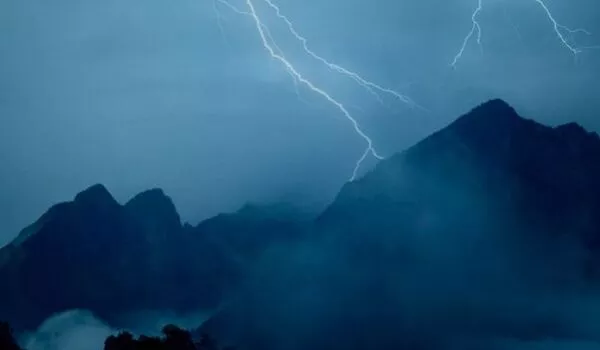Climate change is warming the air, allowing it to hold more moisture, and both of these factors can increase the likelihood of thunderstorms. Scientists predicted that sea ice would melt, glaciers and ice sheets would melt, sea levels would rise, and heat waves would become more intense. Scientists predict that the global temperature rise caused by man-made greenhouse gases will continue. Severe weather damage will also increase and become more severe.
According to new research, climate change may alter lightning patterns across Europe. This could result in more lightning over mountains and in Northern Europe, as well as less lightning over Central Europe.
The Newcastle University and Met Office-led study, which was published in the journal Environmental Research Letters, discovered that there could be a picture of changing weather patterns that includes:
- More frequent storms with more energy, but less lightning locally, owing to less cloud ice and frozen particles in storm clouds, as temperatures rise.
- More lightning at high altitudes, including over the Alps
- Less lightning on lower terrain in central Europe and over the sea- subject to circulation changes that are less certain
The researchers discovered that these changes could increase the risk of wildfires in the mountains and in Northern Europe, but as the authors explain, it’s not all bad news.
These new very high-resolution climate projections, which have the same resolution as weather forecast models, are providing new insights into future changes in convective storms and their associated hazards, such as heavy downpours, lightning, hail, and wind gusts.
Professor Lizzie Kendon
Study lead author, Dr. Abdullah Kahraman, Senior Researcher in Severe Weather and Climate Change, School of Engineering, Newcastle University and Visiting Scientist – Understanding Regional Climate Change (URCC), Met Office Hadley Centre, said: “While more frequent lightning strikes over mountains and in Northern Europe might trigger more wildfires in higher-level forests, we are going to see relatively fewer lightning hazards over more populated areas of Central Europe.”
This is from the latest Met Office climate simulations with the highest local details in meteorological and topographical features down to 2km, which, unlike previous studies, allows individual thunderstorms and their crucial processes resulting in lightning to be simulated across Europe. This is one possible realization of an unmitigated future climate (RCP8.5 scenario), and uncertainties exist, especially in terms of circulation changes.

Professor Lizzie Kendon, Met Office Science Fellow, and co-author on the paper stated that “These new very high-resolution climate projections, which have the same resolution as weather forecast models, are providing new insights into future changes in convective storms and their associated hazards, such as heavy downpours, lightning, hail, and wind gusts. This study’s lightning changes contradict previous findings. This demonstrates the importance of representing the fundamental physical processes within storms, which can lead to future changes that are even of the opposite sign.”
The researchers say these findings highlight the need to re-evaluate lightning risk to wildfires, properties, and human life across Europe.
Study co-author, Professor Hayley Fowler, Professor of Climate Change Impacts, Newcastle University School of Engineering, added:
“This is just more bad news for Northern Europe’s critical national infrastructure, coming on the heels of the damning report ‘Readiness for Storms Ahead? Last week, the Joint Committee on National Security Strategy issued a report titled “Critical National Infrastructure in an Age of Climate Change.” Our paper has identified previously unknown risks from increased lightning, which will necessitate increased investment in climate adaptation measures. Further analysis of the potential impact of these increases in lightning on energy and other critical infrastructure systems is required in order to develop policies and measures that are locally and sector-relevant for adaptation planning.”
















